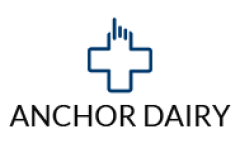Attention Deficit Hyperactivity Disorder (ADHD) is one of the most common disorders in the world. About one million children and adults in Australia alone struggle with this disorder. This disorder often runs in families and affects people’s ability to focus, stay in control, manage emotions, and think things through and more. Basically, people with ADHD have different wiring between anatomy and the brain than the greater part of the population.
ADHD can affect people’s ability to concentrate, function in school, get along with others, succeed in daily life and can greatly affect their grades and future life. Early detection of the disorder is critical so children can get the needed treatments for their disorder and can learn to cope with their disorder from an early stage. When children are diagnosed at an early stage they are very likely to overcome challenges associated with the condition and many catches up with their peers and start performing well in both school and social environments.
While it is important to get ADHD diagnosed as early as possible, it is also important to take note that the condition can greatly vary amongst children, for more info check out Think Organise Do. ADHD can have a very mild effect on some and a huge impact on others. The condition is also often misdiagnosed because everyone suffers from these symptoms at one stage or another. The big difference is that symptoms are chronic in ADHD sufferers and temporary in non-ADHD sufferers.
Most common signs of ADHD
ADHD is basically an issue with executive function and children with this disorder mostly show the following signs;
- Difficulties with managing time
- Difficulties with getting and staying organised
- Find it hard to manage emotions
- Cannot seem to pay attention
- Tends to over-focus when it comes to points of interest such as TV and blocks out everything else while in focus
- Focus keeps shifting from one item to another
- Struggles to get started on tasks
- Doesn’t think before speaking or acting
- Low self-esteem
- Troubled relationships
- Struggles with school work
- Children often have very few friends
- Frequently fidgets, taps hands, stomps feet or squirms in seat
- Continuously leaves seat
- Constant restlessness and urge to climb, run or explore
- Doesn’t usually play quietly
- Doesn’t seem to listen when spoken to
- Ignores direct requests and fails to follow through on instructions
- Forgetfulness and frequently loses things like school supplies
Signs are different for different age categories
The signs of ADHD can be quite different for different age groups. Here is a quick breakdown of just how different ADHD can be in children;
Preschool to Grade 2
- Doesn’t follow direction and ignores an instruction
- Takes and does things without permission
- Frequently frustrated
- Needs to be reminded to stop and listen
- Fidgets get up and talk when not expected of them
Grade 3 – 7
- Seems to daydream, gets distracted, loses focus
- Forgets things and loses items
- Restless
- Doesn’t consider consequences of actions or words
- Forgets assignments and has difficulty finishing on time
Teenagers
- Unorganised and cannot seem to prioritise
- Acts impulsively
- Fidgets and talks too much
- Finishing assignments can be very time consuming
- Rushes through work and makes plenty of mistakes
What ADHD looks like in adults?
ADHD is a chronic condition that doesn’t always clear up when children grow up. Plenty of adults struggle with ADHD although the condition is mostly self-diagnosable by this time. Here are the top signs of ADHD in adults;
- Fidgeting
- Impulsiveness
- Recklessness
- Hyperactivity
- Irritable and irritating
- Takes risk
- Focusing and memory problems
- Anxious, bored, excited moods as well as mood swings
- Can suffer from depression, sleep deprivation, and learning disability.
There are many successful treatments for ADHD that can help adults and children deal with everyday tasks, life, work and school a lot better and that can help these adults find balance with relatives and friends.
Need to discover online courses in behaviour management , Call Behaviour Help for best courses.
Whether you’re affected by male or female pattern baldness, alopecia, thinning hair, or scalp scarring from surgery or an accident, Scalp Micropigmentation could be the solution for you. Contact with our team for the best services.
Vishal Pai knee surgeon Melbourne is a leading knee replacement surgeon, specialised in knee surgery, acl surgery and knee replacement. Get in touch with orthopedic surgeon Windsor.




